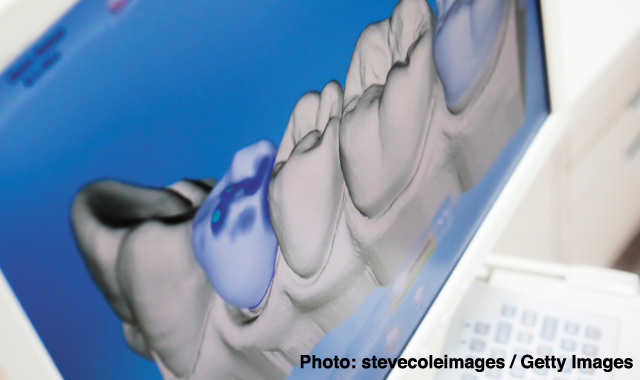5 reasons to use digital impressions
In this list, members of the dental team explain why every dental practice ought to consider converting to digital impressions.

The patients love them. Many labs prefer them. They are easier for clinicians and staff to take. Digital impressions have multiple benefits for a practice. Here are five reasons clinicians should give them a look:
01 | You can stop and start.
“With the CAD/CAM procedure, you do one tooth. Then you stop, and you prepare your second tooth. So you can go easy like that without concern if the blood is going to come or not because you controlled it by stopping your procedure and using your air flow and that’s it,” says Dr. Eric Caron, a prosthodontist with Dental Wings.
Related: How intraroal scanning can open up the digital workflow
02 | You can use it over and over again.
“If you need it in the future for whatever reason, it stays on the computer, and it’s there. You can go back and see what the patient used to look like. You can use it as many times as you want. It never changes; it’s a permanent thing. So say they pour the impression and somehow the tech drops it and the model breaks. They’ll probably re-pour the impression, but it’s not going to be as accurate as the first pour,” Nicole Calderone, RDAEF2 says.
03 | You can communicate easier with the lab.
“If the doctor wants to mark the margin so the lab has a better idea of where they want the placement, then they can send that to the lab. The digital [scan] provides a lot of ease of communication that is handy when it comes to big or small restorations. Whatever it is, you’ve got a lot of tools that you can use to have a better result,” observes John Aguirre, regional product line manager for Carestream Dental’s CS Solutions CAD/CAM portfolio.
04 | You can submit them to the lab faster.
“It’s immediately received by your laboratory, and that’s a huge benefit. If you need something done quickly, you submit and within an hour, that entire file is uploaded to your laboratory,” says Dr. Marc Geissberger, Professor and Chair of the Department of Integrated Reconstructive Dental Sciences at University of the Pacific.
Slideshow: 5 reasons you should consider an introral scanner
05 | You know the impression is accepted before you even send it off.
“The computer will tell you if this is a good image or not. There’s no more rejection. When you take a traditional impression, you send it off, and two or three weeks later, you get it back saying ‘No, we can’t do it. You’ve got to take another one.’ So the time, convenience and aggravation for not only the patient but for the operator, is gone with digital,” notes Tija Hunter, dental assistant and vice president of the American Dental Assistants Association.